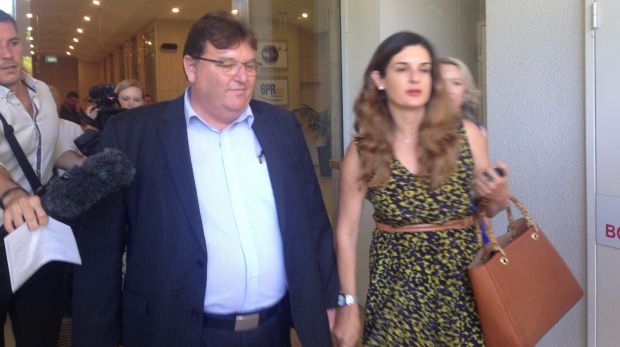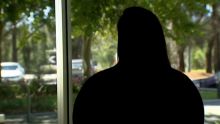The mystery of how lead was detected in drinking water at the Perth Children's Hospital site has deepened, with the company responsible for its construction, John Holland, dropping a bombshell that contradicts the message from the state government.
John Holland's PCH project manager Lindsay Albonico, who has previously been prevented from giving interviews because of government contract clauses, was granted permission to front the media on Wednesday by Health Minister John Day.
More WA News Videos
John Holland representative speaks to 6PR
Hear Gareth Parker from 6PR Mornings interview Lindsay Albonico, the Managing Director for the Perth Children's Hospital project, about the lead contamination.
The company's testing showed the lead was not coming from fittings installed by John Holland, he told Radio 6PR's Mornings host Gareth Parker.
Mr Albonico said John Holland had showed evidence to the Barnett government that lead had been detected more than once in drinking water supplied to the site from the 'ring main' servicing the nearby QEII site.
He said this is not external Water Corporation infrastructure delivering water to the site but the internal circuit delivering water to all parts of the precinct.
"We have had intermittent delivery of water with lead in it ... [though] it's not something that happens regularly," Mr Albonico said.
"The brass fittings we have used are not unique, not special, they are Australian compliant ... we do not believe the source of lead is from the brass fittings."
Mr Albonico could not give a practical completion date for the trouble-plagued hospital but tentatively suggested completion by mid-February.

"John Holland will not be handing over an unsafe building," he said.
"We have to provide 12 consecutive days of [lead free drinking water] ... that repeatedly we are able to produce drinking water from taps."

He said two of the four buildings had reached that testing level while the other two were about 80 per cent there.
In regard to the scandals over unpaid subcontractors, Mr Albonico said given the hospital was a $1.2 billion project with a huge management team and workforce, relationships were as good as on any other similarly sized project.
We have had intermittent delivery of water with lead in it.
He said the number of problems - which he said were between contractors and subcontractors - were not unusual; what was unusual was the level of public scrutiny.
"John Holland behaved in all instances appropriately," he said. "We are very satisfied."
He said "contractual issues" prevented him going into detail about who was to blame for the extent of the delays but it was "not all the issue of John Holland".
"It's a discussion we need to be having with the state," he said.
"John Holland will finish the hospital first and have the argument with the state after."
But Department of Health director general David Russell-Weisz gave an interview on Radio 6PR immediately after Mr Albonico and said the drinking water at QEII was unquestionably safe.
While he could not explain or disprove the John Holland results from early January, he said given the known problems at the PCH site, the North Metropolitan Health Service had increased the frequency of routine water testing done at all WA hospitals.
It had carried out extensive testing at the QEII site in October, December and again on January 17.
The environmental health directorate had reviewed these reports and they documented compliance with the guidelines.
"The public can be assured that the water is safe to drink at the existing QEII site. Known problems on the PCH building site are a separate issue," he said.
He had "no reason not to have confidence" in John Holland's claims of clear test results from its fixtures but the theories that lead could be leaching from them remained.
"We have consistent testing that the lead levels in the potable water at the PCH site are higher than the guidelines," he said.
"We see this issue very clearly as a PCH building issue.
"John Holland are responsible with providing us with safe drinking water ... we will hold them accountable."
Mr Russell-Weisz said there had been several solutions suggested to fix the problem, including filtration and flushing, but John Holland would have to demonstrate these would not disrupt hospital operations.
Who would be responsible for administering the solutions long term was a complex question depending on what those solutions would be, he said, and whether filtration was a long term solution or if a pipe replacement was needed.
Labor this week claimed there were still more than 3000 defects to be fixed at the troubled hospital as well as 16 possible causes for the lead contamination.
















2 comments
New User? Sign up